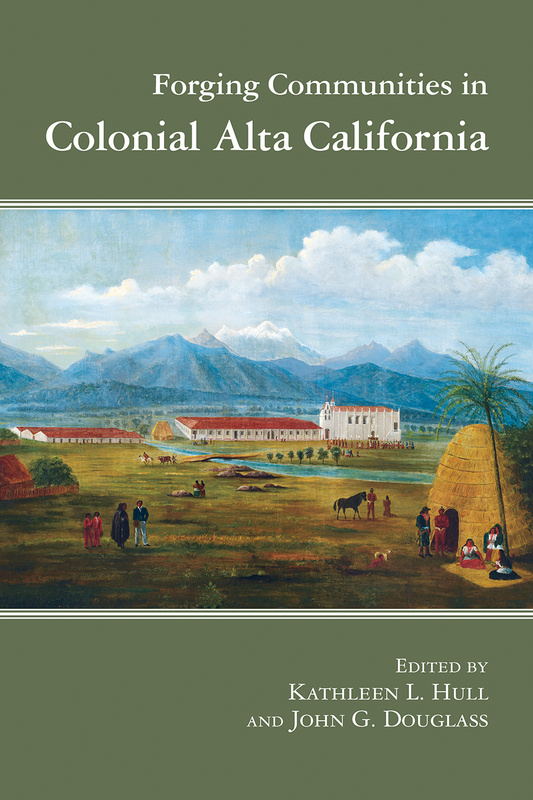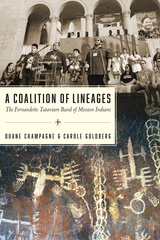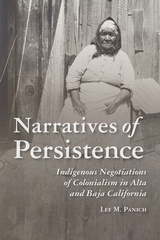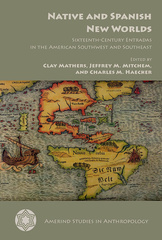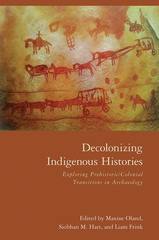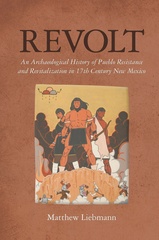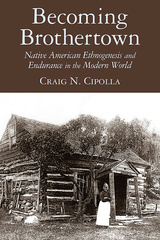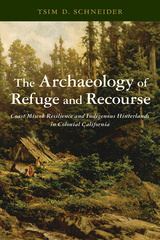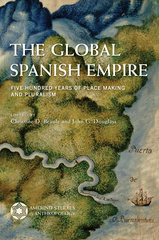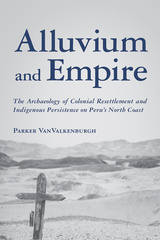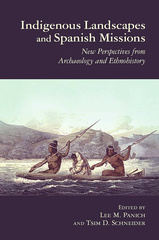Our shopping cart is currently down. To place an order, please contact our distributor, UTP Distribution, directly at utpbooks@utpress.utoronto.ca.

304 pages, 6 x 9
33 b&w illustrations, 9 tables
Paperback
Release Date:03 Sep 2024
ISBN:9780816554195
Forging Communities in Colonial Alta California
Edited by Kathleen L. Hull and John G. Douglass
The University of Arizona Press
Between 1769 and 1834, an influx of Spanish, Russian, and then American colonists streamed into Alta California seeking new opportunities. Their arrival brought the imposition of foreign beliefs, practices, and constraints on Indigenous peoples.
Forging Communities in Colonial Alta California reorients understandings of this dynamic period, which challenged both Native and non-Native people to reimagine communities not only in different places and spaces but also in novel forms and practices. The contributors draw on archaeological and historical archival sources to analyze the generative processes and nature of communities of belonging in the face of rapid demographic change and perceived or enforced difference.
Contributors provide important historical background on the effects that colonialism, missions, and lives lived beyond mission walls had on Indigenous settlement, marriage patterns, trade, and interactions. They also show the agency with which Indigenous peoples make their own decisions as they construct and reconstruct their communities. With nine different case studies and an insightful epilogue, this book offers analyses that can be applied broadly across the Americas, deepening our understanding of colonialism and community.
Contributors:
Julienne Bernard
James F. Brooks
John Dietler
Stella D’Oro
John G. Douglass
John Ellison
Glenn Farris
Heather Gibson
Kathleen L. Hull
Linda Hylkema
John R. Johnson
Kent G. Lightfoot
Lee M. Panich
Sarah Peelo
Seetha N. Reddy
David W. Robinson
Tsim D. Schneider
Christina Spellman
Benjamin Vargas
Forging Communities in Colonial Alta California reorients understandings of this dynamic period, which challenged both Native and non-Native people to reimagine communities not only in different places and spaces but also in novel forms and practices. The contributors draw on archaeological and historical archival sources to analyze the generative processes and nature of communities of belonging in the face of rapid demographic change and perceived or enforced difference.
Contributors provide important historical background on the effects that colonialism, missions, and lives lived beyond mission walls had on Indigenous settlement, marriage patterns, trade, and interactions. They also show the agency with which Indigenous peoples make their own decisions as they construct and reconstruct their communities. With nine different case studies and an insightful epilogue, this book offers analyses that can be applied broadly across the Americas, deepening our understanding of colonialism and community.
Contributors:
Julienne Bernard
James F. Brooks
John Dietler
Stella D’Oro
John G. Douglass
John Ellison
Glenn Farris
Heather Gibson
Kathleen L. Hull
Linda Hylkema
John R. Johnson
Kent G. Lightfoot
Lee M. Panich
Sarah Peelo
Seetha N. Reddy
David W. Robinson
Tsim D. Schneider
Christina Spellman
Benjamin Vargas
Hull and Douglass have done a masterful job of compiling a wonderful set of chapters and pairing them in a careful arc through timely intellectual and historical terrain.'—Stephen W. Silliman, California Archaeology
' ... the greatest contribution of Forging Communities is to underscore the importance of linking colonial pasts to the present to affirm the continuing survival and persistence of indigenous Californian communities in today’s geopolitical landscape.'—David Hurst Thomas, American Antiquity
'Collectively, the book’s chapters broaden our understanding of how Native Californians endured colonization. Perhaps what emerges most clearly in these essays is the degree to which community in the missions transcended any sort of firm boundary between missions and Native villages.'—Steven W. Hackel, Western Historical Quarterly
'This volume is a must read for scholars of Indigenous California. It represents some of the most energizing research in this field: the synergy of historical archaeology and ethnohistory is illuminating and inspiring. All scholars of Indigenous histories will benefit from its careful considerations of what community means, how it is created, and the many purposes it can serve.'—Ethnohistory
‘By emphasizing the processes of creating new communities from old and perseverance in the crucible of the colonial era, this excellent group of scholars offers powerful insights into the factors that linked diverse people in new ways.’—Jeffrey L. Hantman, Department of Anthropology, University of Virginia ‘This volume exposes the complexity of possibilities and shapes that Alta California communities forged in their colonial entanglements. The emphasis on community building is an important contribution to mission studies.’—Mariah Wade, Department of Anthropology, University of Texas at Austin
‘This collection of studies provides noteworthy examples of how to integrate archival research with archeological investigation to provide a more nuanced understanding of how people in the past negotiated their daily lives and created communities.’—Kristina Crawford, Journal of California and Great Basin Anthropology
‘Hull and Douglas’s collection makes a welcome addition to existing scholarship and suggests a new paradigm for studies of Indigenous California.’—Ashley Riley Sousa, American Society for Ethnohistory
‘This volume offers useful concepts for understanding the dynamic and adaptive strategies of Native peoples.’ - Erika Perez, Southern California Quarterly
‘Anthropologists and archaeologists will find this volume especially useful for its recent scholarship, but historians will also see the benefits of utilizing archaeological evidence and its conceptual frameworks for understanding community formation during times of demographic and political distress.’—Erika Perez, Southern California Quarterly
‘Archaeological data add the critical dimension to the lists of individual Natives identified in the various sacramental registers and other archives; together, they provide new insights into diverse ways Native communities were reforged.’—David H. Snow, Journal of Anthropological Research
‘Hull and Douglass have done a masterful job of compiling a wonderful set of chapters and pairing them in a careful arc through timely intellectual and historical terrain.’—Stephen W. Silliman, Colonial Archaeology
‘This well-researched and well-written volume will appeal to scholars, researchers, and general readers for years to come.’—Kelly B. Silva, The Journal of San Diego History
Kathleen L. Hull is an associate professor of anthropology at the University of California, Merced. She is the author of Pestilence and Persistence: Yosemite Indian Demography and Culture in Colonial California.
John G. Douglass is director of research and standards at Statistical Research, Inc. He is also a visiting scholar in the School of Anthropology at the University of Arizona. His most recent book is New Mexico and the Pimería Alta: The Colonial Period in the American Southwest.
John G. Douglass is director of research and standards at Statistical Research, Inc. He is also a visiting scholar in the School of Anthropology at the University of Arizona. His most recent book is New Mexico and the Pimería Alta: The Colonial Period in the American Southwest.
Kathleen L. Hull and John G. Douglass
Part I. Religious Beliefs and Practices
1. The Creation of Community in the Colonial Era Los Angeles Basin
John G. Douglass, Kathleen L. Hull, and Seetha N. Reddy
2. “A Mourning Dirge Was Sung”: Community and Remembrance at Mission San Gabriel
John Dietler, Heather Gibson, and Benjamin Vargas
3. Making and Unmaking Native Communities in Mission and Post–Mission Era Marin County, California
Tsim D. Schneider
Part II. Economic or Political Ties
4. Contingent Communities in a Region of Refuge
Julienne Bernard and David W. Robinson
5. Mission Recruitment and Community Transformations: An Ethnohistorical Study of the Cuyama Chumash
John R. Johnson
6. Marriage and Death in the Neophyte Village at Mission Santa Clara: Preservation of Ancestral and Elite Communities
Sarah Peelo, Lee M. Panich, Christina Spellman, John Ellison, and Stella D’Oro
Part III. Quotidian Practice in Shared Space
7. Archaeological Insights into the Persistence of Multiscalar Native Communities at Mission Santa Clara de Asís
Lee M. Panich, Sarah Peelo, and Linda Hylkema
8. Communities of Persistence: The Study of Colonial Neighborhoods in the Fort Ross Region of Northern California
Kent G. Lightfoot
9. The Diverse Community of the Pueblo of San Diego in the Mexican Period in California, 1821–1846
Glenn Farris
Epilogue. Proximal Mirrors: Colonial California and Colonial New Mexico
James F. Brooks
Contributors
Index

